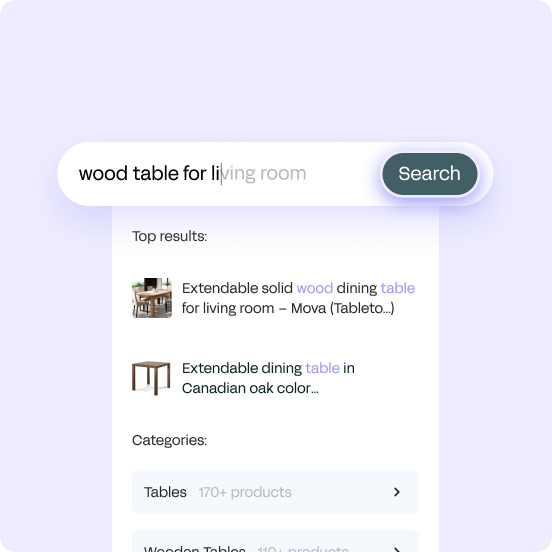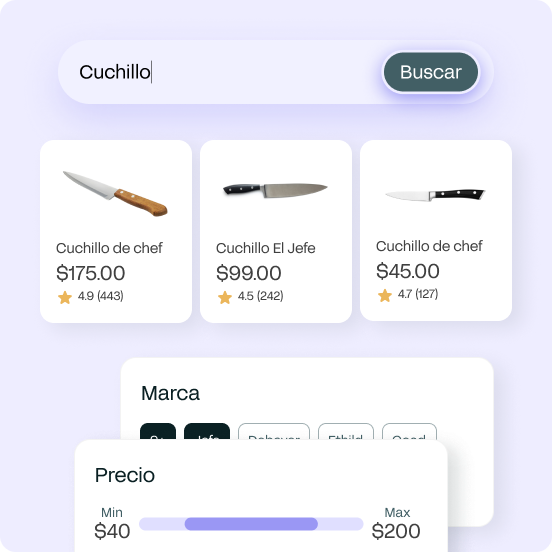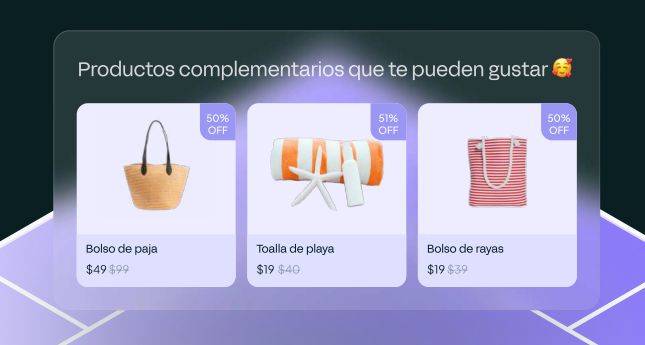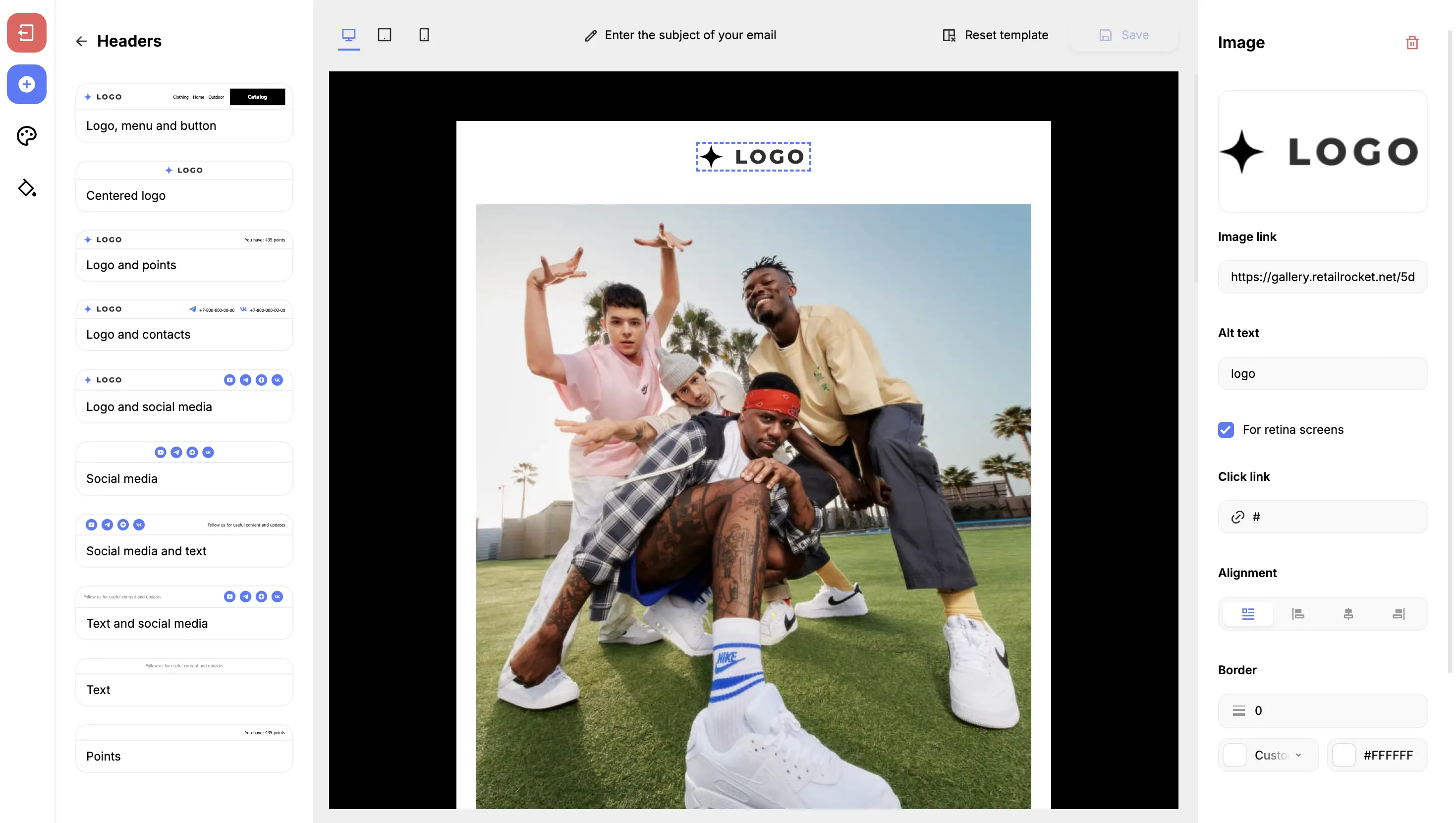
Published
September 24, 2025
From AI Search to Attribution: What’s New at Loadstone (Q2 2025)
AI in eCommerce is moving fast — but the real question is: what can you actually do with it today? This quarter’s updates aren’t about buzzwords, they’re about practical gains: faster search, smarter recommendations, clearer attribution.
Webinar replay :

This is test
Test

Meet the authors
Loadstone
AI Commerce Search
Article
AI Commerce Search
Published
09
/
24
/
2025
From AI Search to Attribution: What’s New at Loadstone (Q2 2025)
AI in eCommerce is moving fast — but the real question is: what can you actually do with it today? This quarter’s updates aren’t about buzzwords, they’re about practical gains: faster search, smarter recommendations, clearer attribution.

If you run eCommerce, you don’t need more theory — you need tools that work. Below, we’ll walk through the updates that help teams lift conversions, improve retention, and cut wasted spend right now. Here’s how they open up new possibilities for your site.
In this article, I’ll walk you through the most important product updates from Loadstone in Q2 2025. This isn’t a product announcement. It’s a guide to how retailers are already using these updates – and how you can apply them right away. You’ll see how search, recommendations, attribution, and analytics are becoming more connected, and how you can put these capabilities to work immediately.
Why this quarter feels different
There’s a shift happening. Until recently, AI features in eCommerce were seen as nice-to-have add-ons: a smarter search bar here, a recommendation widget there. But the truth is, disconnected tools don’t move the needle anymore.
What’s happening now is bigger: we’re moving from isolated features to connected capabilities. This integration didn’t come from a lab idea – it came from customer requests. Retailers asked for signals from search to improve recs, and recs data to clarify attribution. To support this, we built a shared signal hub and APIs that connect these modules. That’s what makes the loop possible.
And the best part? The implementation no longer takes months or massive IT projects. We’re talking about go-lives in two weeks and measurable results in the first 2–6 weeks after that.
Smarter Search: from “I can’t find it” to “this is exactly what I wanted”
If there’s one place where frustration kills sales fast, it’s the search bar. Typos, incomplete queries, or vague requests often mean zero results, and a user who bounces.

This quarter, Loadstone’s AI Search goes further in three ways:
- Continuous learning: it adapts automatically to clicks... We saw this in action with a home & living retailer, where error correction alone lifted conversion from search by 12%.
- Error correction and synonyms: “nikke shoes” brings back Nike results. “rain jacket” is linked to “windbreaker.”
- Predictive ranking: results are sorted not just by textual match, but by likelihood to convert, aligned with business goals like margin or stock.
Imagine a user searching “gift for runner under €50.” Instead of dumping dozens of random items, the engine curates a shortlist: running socks, reflective gear, recovery tools – all relevant, priced right, and in stock.
The metrics you should watch here aren’t vanity ones. Focus on zero-results rate, click-through on results, and search exits. These signals tell you whether search is unlocking revenue or quietly leaking it.
.avif)
Recommendations that guide, even when nothing shows up
AI recommendations aren’t new. But where they show up – and how – is changing. It’s no longer just about a “You may also like” box on the product page.
Recommendations now play a role across the entire journey:
- On category pages: to guide discovery.
- On product detail pages: to surface true alternatives and complements.
- In the cart and checkout: subtle cross-sell without friction.
- In empty states: this is where things get interesting.
An empty state is when the user sees… nothing. A cart is empty. A search comes back with zero results. A category is out of stock. Or a wishlist has no items yet. In the past, these were dead ends. Today, they’re prime opportunities to turn nothing into discovery.
For example:
- A zero-results search can show near matches plus quick filters.
- An empty cart can suggest top sellers or “recently viewed” items.
- A category without stock can display the closest alternatives in style or size.

And it doesn’t stop on-site. Recommendations extend into communications too: email, push, WhatsApp. That means your user doesn’t just get guided while browsing, but also in the quiet moments after purchase – like receiving a WhatsApp message suggesting printer ink when their last cartridge is about to run out.
To measure impact here, track CTR on recommendation modules, session interaction with recs, and how much they lift AOV. Small shifts here compound into serious revenue.
Local signals that map to real business KPIs
One common mistake is treating every dashboard number as equally important. The truth is, most vanity metrics don’t tell you if revenue is leaking or growing.
This quarter, we’ve focused on connecting real user actions to business outcomes:
- Zero-results searches: tell you where catalog enrichment is needed.
- High exits from results: can highlight weak pricing, poor photos, or irrelevant ranking.
- CTR on recommendation modules: shows whether recs are just “noise” or actually moving baskets.
- Depth of navigation: signals how easily customers are finding what they came for.
Together, these signals map directly to the KPIs that matter most: Visit-to-Order Conversion Rate, Average Order Value (AOV), and Customer Lifetime Value (CLV).
Instead of waiting for a quarterly BI report, managers can see these signals in real time – and fix what’s broken before it costs revenue. For example, enriching product titles after a spike in zero-results can immediately lift conversions in that category.

Attribution that separates signal from noise
We all know the story: last-click attribution overestimates the channel that closes, and underestimates the touchpoints that really shaped the journey. The result is budget waste.
Loadstone now brings incrementality testing into attribution. Instead of guessing, it compares exposed vs. non-exposed users to see the real lift of a channel or feature.
Here’s what we’ve seen in practice:In some pilots, up to 34% of sales attributed to certain channels were actually organic. This comes from one of our pilot projects in Europe. Without incremental testing, you’d think those sales came from paid efforts – and you’d overspend.
This matters beyond ads. You can use it to measure how much product recommendations on the PDP really contribute to cross-sell, or how much an email sequence moves the needle versus what would have happened anyway.
In short: attribution is shifting from “what got the click” to “what truly made the sale.”
Timing is everything: SmartPlacement with Delayed Start
.avif)
Another pain point in marketing is timing. Too often, campaigns hit too early (and feel spammy) or too late (and miss the moment).
With Delayed Start, SmartPlacement campaigns can now trigger only when a signal threshold is met. Think of it as “holding fire until the user is ready.”
A few real-world scenarios:
- A shopper who visits the same high-ticket electronics product three times in four days sees a subtle urgency message on the third visit.
- A fashion buyer hovering over a size/stock window gets a timely nudge before abandoning.
This makes campaigns feel natural, not forced. And because you can simulate audience size before launch, you avoid wasting impressions.
Triggered emails made simple with EasyWizzy

Email is still one of the highest ROI channels – but too many marketing teams are slowed down by dev bottlenecks.
Enter EasyWizzy, the WYSIWYG editor that lets marketers design triggered emails with dynamic product blocks (recommendations included) without touching code.
Picture this:
- A newsletter that auto-populates with the products each recipient is most likely to buy this week.
- A post-purchase flow that suggests complementary products (ink cartridges, water filters, running socks) without anyone manually curating them.
The payoff is speed. In one case, a team shipped a 5-email triggered sequence in 3 days – a process that previously took 3 weeks and a full dev sprint. And testing becomes continuous rather than occasional.
Security matters too: stronger login with TOTP
For enterprise clients, compliance and account security are top priorities. This quarter introduces TOTP (time-based one-time passwords) for multi-factor authentication. It’s a small feature with a big impact: reducing fraud risk and meeting stricter IT requirements without adding friction for end users.
Advertiser Analytics: answers in minutes, not weeks
Finally, for teams running Retail Media, Advertiser Analytics now puts decision-ready insights directly in their hands. Instead of waiting for long reports, you get campaign CTRs, segment performance, and recommendations on what to pause, duplicate, or test – often within days.
That means you can revive a struggling campaign mid-flight, rather than just performing an autopsy after it’s over.

Implementation without the drama
All of this might sound heavy – but it doesn’t have to be.
In practice, integration takes about two weeks. The data you need is straightforward: product feed, basic navigation history, conversion events. From there, the AI learns and starts delivering measurable results within the first 2–6 weeks, depending on feed quality and number of activated modules.
Roles are clear too: Loadstone brings the integration and customer success expertise, while your team provides minimal IT input and business alignment.
And if you’re wondering about ROI, the model is transparent: fixed pricing, a 90-day guarantee, and a track record of outsized returns.
The bigger picture
What ties all these updates together is a shift from fragmented features to a true ecosystem of intelligence. Search discovers. Recommendations guide. Signals highlight what’s broken. Attribution shows what’s real. And omnichannel touchpoints ensure the learning doesn’t stay siloed.
The promise is simple: clear signals for managers, faster actions for teams, and AI that learns from your customer behavior and adapts to your business goals.
In a world where traffic costs are rising and user patience is shrinking, that can be the difference between standing still and growing fast.
Talk to an
e-commerce expert



Meet the authors

Felipe Repullo
Sr Account Executive LATAM · Loadstone
Felipe Repullo is a digital strategy leader specializing in AI personalization and Retail Media for the Latin American market. With a strong background in eCommerce and marketing technology, he helps brands unlock revenue by aligning innovation with local market dynamics.
Loadstone
AI Commerce Search
See alternative resources
You will come for the technology and stay for the vision


Valeria Jirón
Spain


Paula Azócar
Chile


Matías Candia
Chile


Jorge Olivares
Chile


Matías Candia


Valeria Jirón


Jorge Olivares


Paula Azócar
Magnetize your commerce business at every touchpoint
Discover how our innovative solutions can elevate your retail strategy and drive sales effectively.





.avif)





























